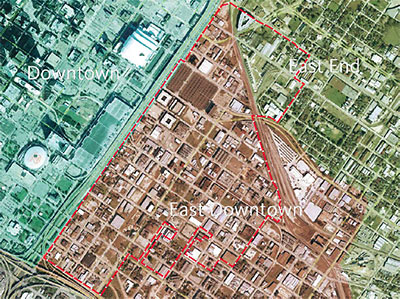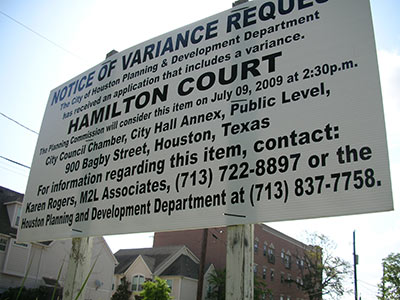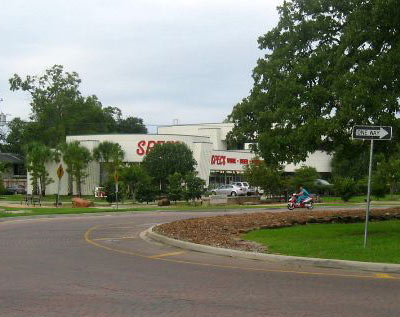Some major changes to the implementation of Houston’s long-ridiculed historic preservation ordinance may be coming very soon, if a proposal supported by Mayor Annise Parker passes a city council vote that could occur as early as next Wednesday, Swamplot has learned. Under the current ordinance (for all designated historic districts except for the Old Sixth Ward, now a designated “protected” historic district), owners of historic-district properties whose plans for demolition, new construction, or remodeling have been rejected by the city’s Archaeological and Historical Commission have been able to proceed with their plans anyway — simply by waiting 90 days.
But in an email to Swamplot, a spokesperson indicates the Mayor wants the commission to “temporarily discontinue” the issuing of such 90-day waivers for the remainder of this calendar year — or until amendments to the preservation ordinance are hashed out and approved by city council (whichever comes first). Under some revisions to the ordinance likely to be considered in that 7-month period, 90-day waivers could be eliminated entirely.
Swamplot was alerted to the potential changes by a builder, who became alarmed that “anyone, property owner or builder, who does not already have a Certificate of Appropriateness for demolition or new construction as of next Wednesday will not be able to get one until next year.” The changes the Mayor is proposing aren’t quite that drastic, however. Parker communications director Janice Evans indicates that the Houston Archeological and Historic Commission will still issue “certificates of appropriateness” while any moratorium on 90-day waivers is in place; anyone whose request for a certificate has been rejected will be able to appeal the decision to the Planning Commission.
What permanent changes to the preservation ordinance are being considered? A committee led by council member Sue Lovell — including fellow council member Ed Gonzalez as well as representatives of the historical and planning commissions — has been charged with reviewing it. All changes, notes Evans, “will be considered by the HAHC, the planning commission and City Council, providing numerous opportunities for dialogue and public input.” In the meantime, the mayor “supports the temporary discontinuance because it will allow for a pause in activity while discussions regarding increased protections occur with various stakeholders,” Evans tells Swamplot.
Want more details about the mayor’s proposal? Here’s the text of our Q-and-A with her communications director:
CONTINUE READING THIS STORY





